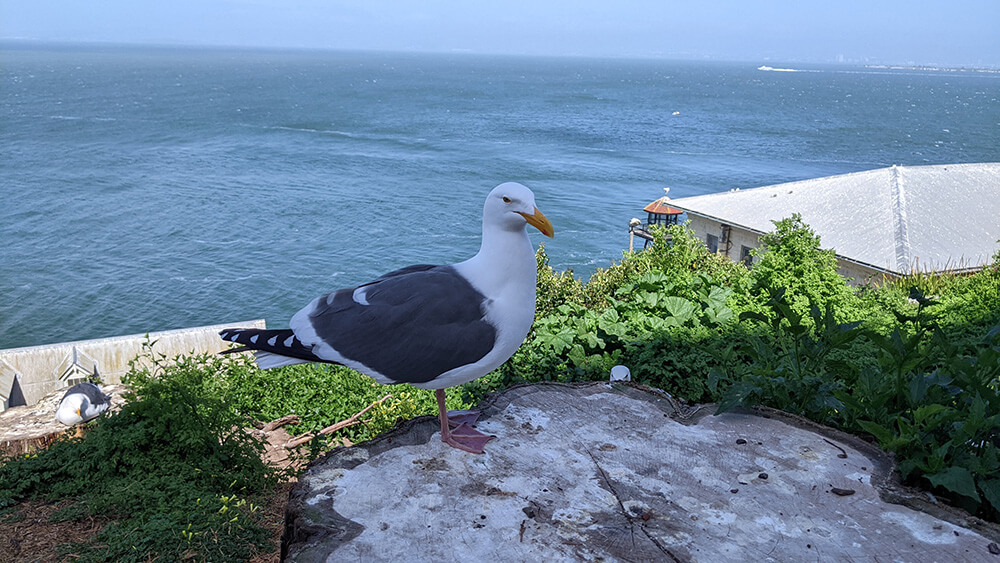
Best Birdwatching on Alcatraz Island According to a Local
When people think of Alcatraz, the first thing that generally pops into their minds are criminals and concrete — not natural beauty and wildlife. They’re much more likely to have heard of the notorious “Birdman of Alcatraz” than the scores of birds that live there today.
But local birders and wildlife enthusiasts from around the world know that the island is an incomparable haven for our feathered friends. It’s the place to go in San Francisco if you’re interested in birdwatching, whether you’re a novice birder or have dozens of expeditions under your belt.
In this guide, I’ll share how to explore Alcatraz to maximize your birdwatching fun, including what parts of the island to visit and when to go.
Why Alcatraz is great for birding
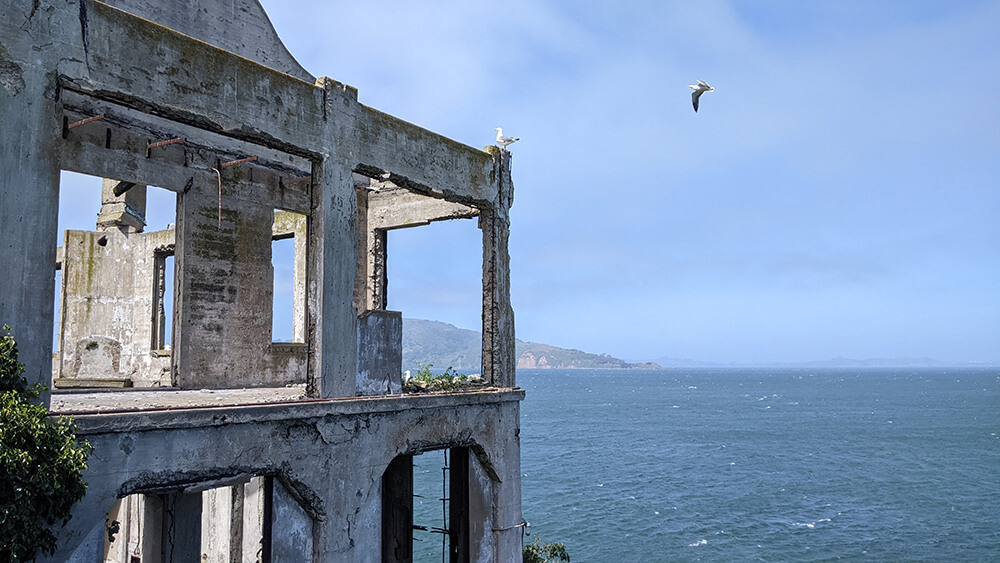
The Rock is famous for the harsh, rugged landscape that made it the perfect place to put one of the most draconian prisons ever built in the history of the United States.
But its isolation, coupled with the relative closeness to the mainland that made the prison particularly agonizing for prisoners and staff who lived there, is part of what makes it so perfect for birds.
They don’t have to travel far to forage for food for themselves or their young. At the same time, there are no mammalian predators there, and humans are only allowed in specific parts of the island at specific times, so it’s a very safe place for even the smallest songbirds, such as warblers and song sparrows.
On the island, you can see so many different kinds of birds. Here are just a handful:
- cormorants
- sparrows
- herons
- egrets
- gulls
- pigeons
- falcons
- ravens
When I went to Alcatraz for the first time, my daughter, who was 7 years old at the time, ended up feeling a little overwhelmed inside the penitentiary from all of the crowds and the sounds reverberating off of the concrete walls. We stepped outside to get some fresh air and found there was much more to Alcatraz than we had first realized as bird after bird grabbed our attention.
Both of us being nature lovers, we ended up spending more time outside wandering the grounds and exploring the tide pools than indoors at the main attraction. We left wanting to know more about the beautiful creatures that make the island their home today, so we made a plan to return soon — this time, with binoculars.
After a little research, I realized that Alcatraz is a world-famous hotspot not only for travel influencers and history fans, but also for birders. There are birds there that you won’t see anywhere else in California, and many of the seabirds that live there normally only make their homes on offshore rocks, meaning they’re generally out of reach for most nature lovers, unless you happen to have a boat.
Taking a trip to Alcatraz to explore the wildlife means you’ll be able to see the nesting, mating, and family behaviors of thousands of birds who make The Rock their home, no personal yacht required.
It’s also a gorgeous place to spend the day if you enjoy nature in general and want the opportunity to explore a unique ecosystem that’s off the beaten path.
Either way, you can find lots to see and do on The Rock that is surrounded by sea and salt, rather than prison walls.
The bird history of Alcatraz

The name “Alcatraz” actually comes from the island’s deep history as a safe haven for birds. When the Spanish explorer Juan Manuel de Ayala first visited the island in 1770, he dubbed it “Isle de los Alcatraces,” or “Islands of the Seabirds,” inspired by the abundant avian life he found there.
Over the next several decades, it continued to be called “Island of the Birds” or “White Island,” referring to the plumage of pelicans and western gulls that were so abundant there. Eventually, the island became known as Alcatraz.
While Alcatraz was being used as a military base and prison, birds were rarely seen and tended not to nest or migrate there. After the prison closed, however, the island sat quiet and mostly untouched for nearly a full decade. During that time, birds that had not been seen for over a century began flocking back to its rocky shores.
When go birding on Alcatraz
The National Park Service recommends visiting Alcatraz sometime between the end of winter to the beginning of summer to glimpse the best of the birdlife, so you can’t go wrong with a spring trip to the island.
However, there are different species of birds that come and go during all times of the year, so no matter when your trip is planned, be sure to bring a pair of binoculars and a pair of sturdy hiking shoes. Even if you’re mostly planning on spending time indoors at the prison, just a few minutes of walking to explore the natural beauty of the island can really pay off.
Where to spot birds on Alcatraz
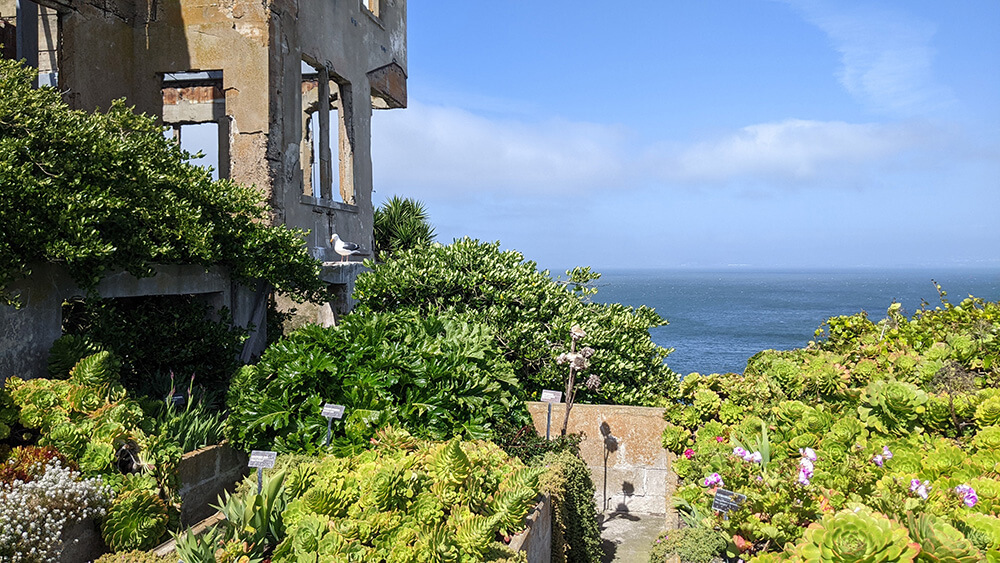
Even before you get off the ferry, you’ll begin to get hints of what awaits you, as large numbers of gulls and cormorants tend to be active in the sea surrounding the island.
The gulls will continue to be your companions almost everywhere on Alcatraz, adding to the eerie atmosphere of the notorious prison as they perch on just about every structure. Their favorite place tends to be the lighthouse, though, or just beneath it, which is where they nest.
Near the dock, you might get a glimpse of great blue herons nesting in Alcatraz’s biggest eucalyptus tree, which sits above the Alcatraz Rose Garden. The great blue herons are one of The Rock’s many avian success stories, growing from only a handful of active nests before 2016 to over a dozen today.
Nearby, you may be able to spot a black-crowned night-heron (which, if you haven’t seen one, is just as spooky looking as it sounds) on the heavily overgrown wall above the amphitheater. These birds, as well as their close cousin the snowy egret, were hunted almost to extinction in the early 1900s.
Both have found sanctuary here on Alcatraz for the past several decades, helping to bolster their numbers throughout the Bay Area. They build their nests in the shrubs, trees, and bushes throughout the island, but you’re most likely to see them near the amphitheater, or along the island’s west road (when it’s open — more on that in just a moment).

Heading up the road towards the cell house is where you’ll find many of the smallest and cutest feathered friends on the island, including the white-crowned sparrow, song sparrow, black phoebe, Anna’s hummingbirds, yellow-rumped warblers, and Townsend’s warblers. Many of these smaller birds tend to be more common in fall and winter.
You will also probably see ravens roosting about and peering down their long beaks at you, fitting the general theme of the island.
Unique bird species on Alcatraz

Alcatraz is the only breeding colony site in the San Francisco Bay for several types of cormorant, including the Brandt’s cormorant, which is an iridescent black bird with a bright blue throat patch that they like to show off by pointing their beaks up to the sky (it’s a courtship thing).
These birds make their home on the rocky western shore of the island, where you’ll also have a chance to see black oystercatchers, egrets, and herons — and to snap shots of the gorgeous view of Baker Beach across the water.
The past several years have given visitors to Alcatraz the epic experience of seeing as many as 3,300 breeding pairs of these elusive birds, who spend most of their lives far out at sea, diving deep into the ocean to hunt and eat. They head to the island in early February, which is when the National Park Service closes down this part of the island, giving them the best opportunity to hatch and raise their young as possible before migrating later in the summer.
Local tip: If you happen to be on Alcatraz during the Brandt’s cormorant breeding season from February to June, don’t despair. Even when the west part of the island is closed, you’ll likely be able to get a glimpse of these birds from the overlook above the parade grounds.
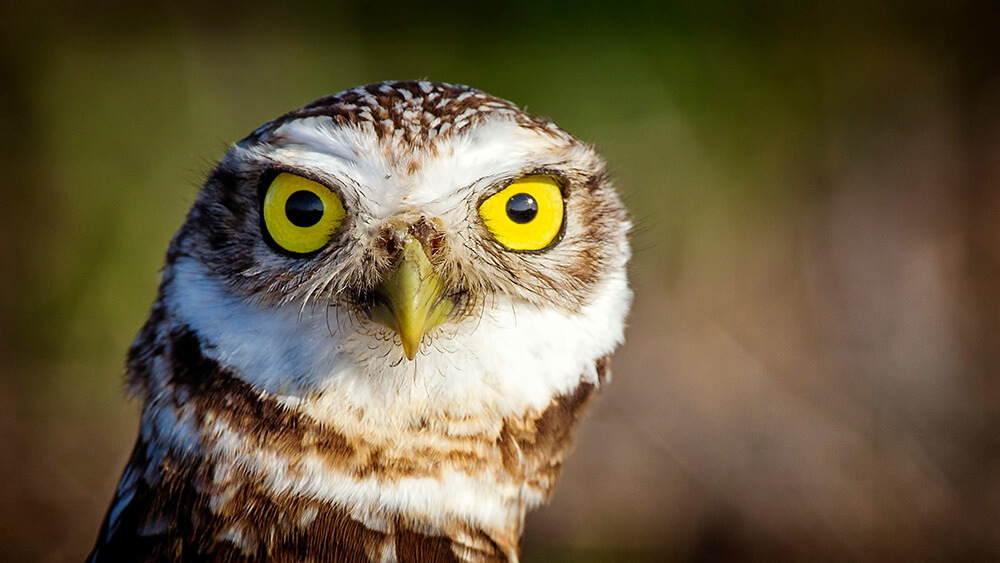
The west side of the island is also where you’re most likely to see the two birds of prey who make their home on The Rock: the tiny burrowing owl and the majestic peregrine falcon.
This part of the island is best accessed by the Agave Trail, which starts just south of the ferry dock and goes along the base of a steep hillside that features four different agave species. The trail is only open between late September and early February, which is exactly when you want to go, both to take advantage of the most fog-free weather of the year in the Bay and because it’s when you’re most likely to see teeny burrowing owls bobbing up and down from within the rubble scattered across the parade grounds. These small survivors, designated as a “species of special concern” in California, have been pushed out of much of their original habitat across the state, so finding solace on Alcatraz has been particularly important.
The sanctuary of the island has also been particularly important for peregrine falcons, who were nearly driven to extinction in the 1970s because of the impact that the pesticide DDT had on them (this is actually what led to the banning of DDT nationwide).
They rebounded slowly, coming off the endangered species list in the 1990s, and today make their homes across California and the rest of the country in rocky outcroppings, usually far away from humans and often at very high elevations.
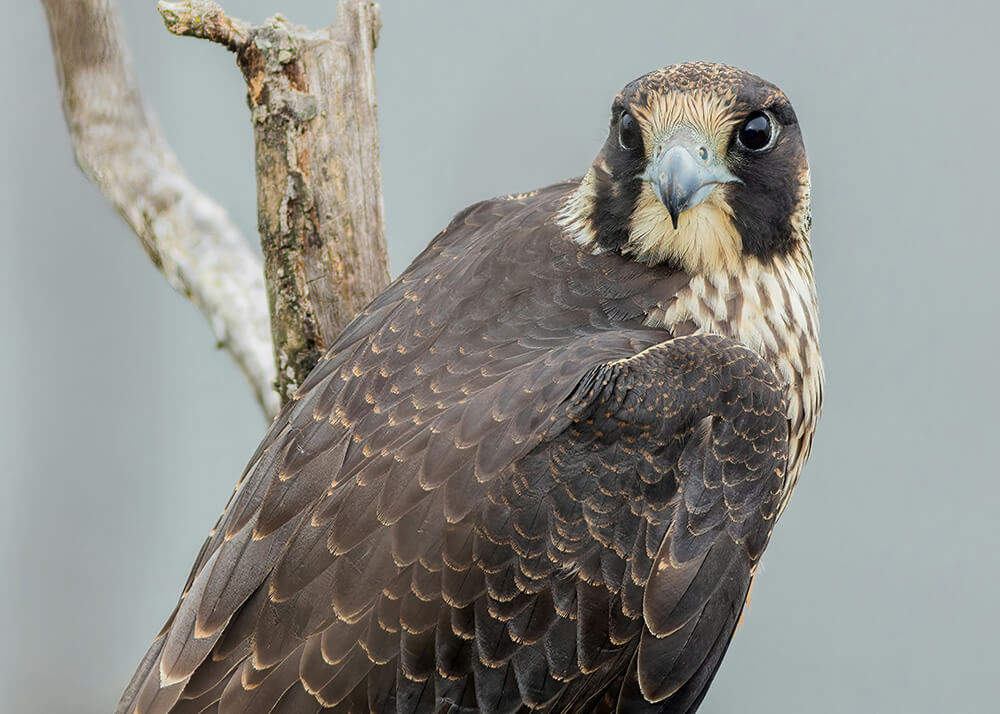
Over the past several years, however, Alcatraz has been home to a special peregrine falcon named Larry — short for Lawrencium — who hatched in the UC Berkeley bell tower, just across the Bay. Larry eventually found a mate, and began breeding on Alcatraz in 2020. She has had at least three clutches of baby falcons in that time, with the newest batch, born in April 2024, going on to become mini-influencers, starring in their own livestream on the National Park Services website so that you see them up-close any hour of the day.
But for an even more personal experience, try spotting Larry in her own neighborhood. Just don’t blink — like all peregrine falcons, she and her mate can fly over 200 miles per hour.
Tour Alcatraz Island and more

There are many reasons that Alcatraz Island makes it on every “top things to do in San Francisco” list. In fact, it’s regularly rated by Tripadvisor travelers as one of the top landmarks in the country. (It’s been No. 1 multiple times and came in fifth in 2023.)
The natural beauty you’ll experience here is just one aspect of this not-to-be-missed northern part of the city, which also includes Ghirardelli Square and Fisherman’s Wharf. There’s no better way to experience it all than with the guidance of a local, which you can do — including taking the ferry to Alcatraz — as part of our walking tour.
Your local tour guide is a great resource for learning more about SF, and your tour ticket includes a cruise to the island with an audio guide from the National Park Service telling all about the island’s fascinating history.
And remember, whenever you choose to visit, be sure to save time to hike around and explore the wildlife that shelters on the island — there’s really no other place like it.
